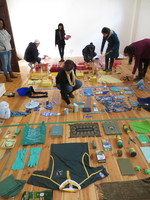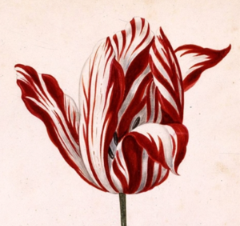Items
Site
The Medicine Chest
keywords is exactly
colour
-

Playtone
Resulting from a 5-day taxonomy workshop which ran from 14 – 18 July 2014 as part of the Honours in Curatorship programme, the PLAYTONE exhibition depicts one of the various exercises students were asked to perform. Colours were allocated to groups, and students instructed to photograph all colour-coded objects during their daily routines, which were then classified using the PANTONE system. In addition to this, students also generated a selection of words they associated with their allocated colours and accumulated colour-coded personal belongings. Participants: Matthew Bradley, Annchen Bronkowski, Thea Ferreira, Sakhisizwe Gcina, Gail Gunston, Sharne McDonald, Mari McFarlane, Mosa Motaung, Thandiwe Msebenzi , Chloe Obermeyer, Bianca Packham, Lindelwa Pepu, Tazz Rossouw, Phenduliwe Sibisi -

Deductions from smooth rocks
Extract from Bettie Higgs's reading of rocks in 'Visual Practices Across the University'. Most of the rocks in this photograph are about 360 million years old, so the grains that comprise them are substantially older. The grains came originally from a mountain range, as large as the Himalayas, whose roots can still be seen in counties Mayo and Donegal, in the northwest of Ireland. The grains were carried south by rivers and deposited in this area; the smallest grains were carried all the way to the ocean, which was far south of Cork at the time, in what is now the Atlantic Ocean south of Ireland. (There was very little rainfall at the time: the portion of land that is now Cork was 10° south of the Equator. This can be deduced from the properties of the iron in the rock.) The water in which the grains were transported was oxygenated, and the iron precipitated out as iron oxide (haematite), which cemented the grains and which accounts for the red color (Elkins 2007: 74 - 78). -

Timekeeper
Installation view of a hole revealing all painting of successive exhibition layers, 20 cm in diameter at the Viennese Secession -

The broken tulip
"During the period known as tulipmania which transpired in the Netherlands during the 17th century, contract prices for bulbs of the recently introduced tulip reached extraordinarily high levels and then suddenly collapsed. Tulips that displayed a break in their colour reached prices far higher than those that didn’t. It wasn’t until 1920, after the invention of the electron microscope, that scientists discovered that the cause for this symphony of colour was a virus that spread from tulip to tulip by Myzus persicae, the peach potato aphid. Michael Pollan in The Botany of Desire, explains this phenomenon: “The colour of a tulip consists of two pigments working in concert — a base colour that is always yellow or white and a second, laid-on colour called an anthocyanin; the mix of these two hues determining the unitary colour we see. The virus works by partially and irregularly suppressing the anthocyanin, thereby allowing a portion of the underlying colour to show through — creating the magic of the broken tulip. A fact that, as soon as it was discovered, doomed the beauty it had made possible" (Pollan 2003: 97 in Liebenberg 2011: 92). -

Semper Augustus Tulip
Photo of Semper Augustus watercolour, captured whilst perusing the Pera Museum, Istanbul, 2013


